A Spatial Paradigm for Thriving Learners
Key Points
-
Design patterns provide a potential next step for communities to cultivate environments of thriving learners.
-
Here’s a side-by-side comparison of two spatial paradigms for schools.
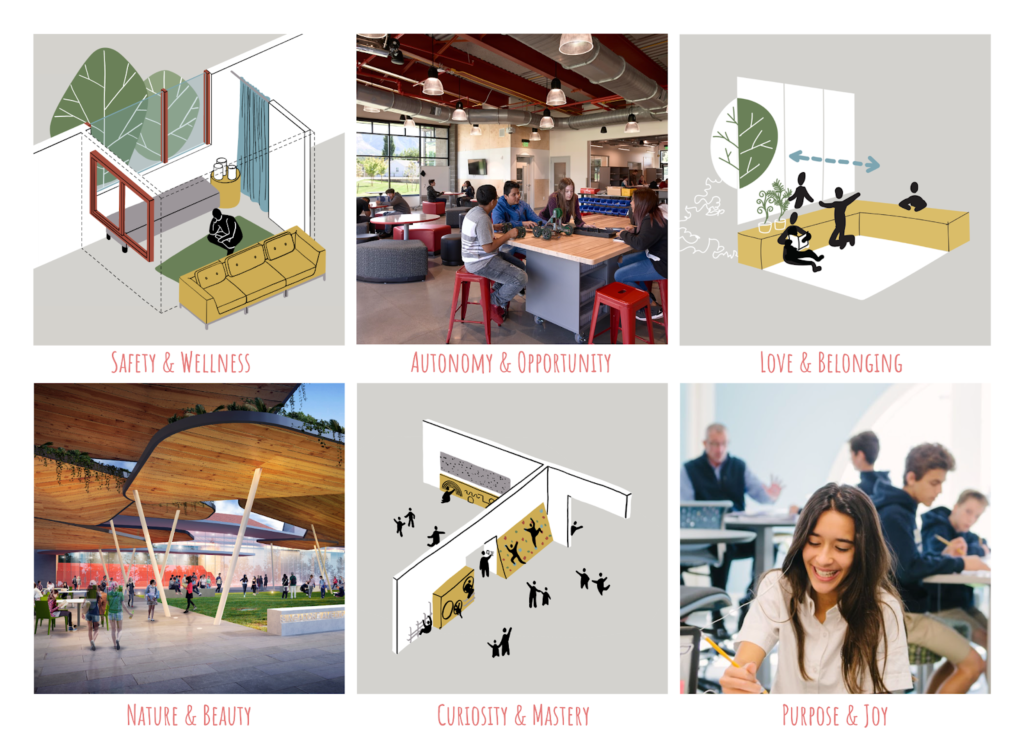
By: Nathan Strenge
In our last Getting Smart article, we introduced six elements of thriving learners (pictured above). Using six school images, we examined how each thriving element is manifested in the physical environment, as well as its impact. Alone, each element adds tremendous value to learners’ experiences. Combined, they provide the necessary preconditions for learners to thrive. However, when applied within the context of an overarching spatial paradigm that is designed to help foster each element, the benefit is exponential.
In this article, we will attempt to define a spatial paradigm that helps schools effectively create the conditions to foster the six thriving elements – we will call this the Thriving Paradigm. When defining something for the first time, it’s helpful to contrast it with something known. Thus, we will juxtapose the Thriving Paradigm with the spatial model that most readers of this publication experienced growing up, which we will call the Conventional Paradigm.
A Quick Note on Paradigms
Because we have chosen to use the term paradigm, we’d like to pause to reflect on the definition of this word and provide context for using it. Collins English Dictionary defines paradigm as: “a model for something that explains it or shows how it can be produced.”
There is nothing inherently good or bad about a paradigm. A paradigm typically arises to meet the needs of a specific set of circumstances. The conventional school spatial paradigm arose in the 20th-century to respond to a demand for bigger schools that could meet the needs of a growing student population. Two major events preceded this demand. First, by 1918 all states had passed legislation requiring that all American children were required to attend at least Elementary School (source), making one room schoolhouses less practical. Secondly, post-WWII America witnessed booming populations and an increasing push for a baseline of literacy. As such, the conventional paradigm was a response that largely met the context of the time.
We, at Fielding International, want to be abundantly clear. We are not suggesting that it is impossible to have a great school that uses the conventional spatial paradigm. We know high-quality learning can happen inside conventional environments, and incredible educators around the world overcome spatial barriers every day. However, if we have different priorities for our schools in the 21st-century, and the environment can be designed to bring about those priorities, it is only natural that a different paradigm should arise.
With that, let’s explore the transformation from the Conventional Paradigm to the Thriving Paradigm.
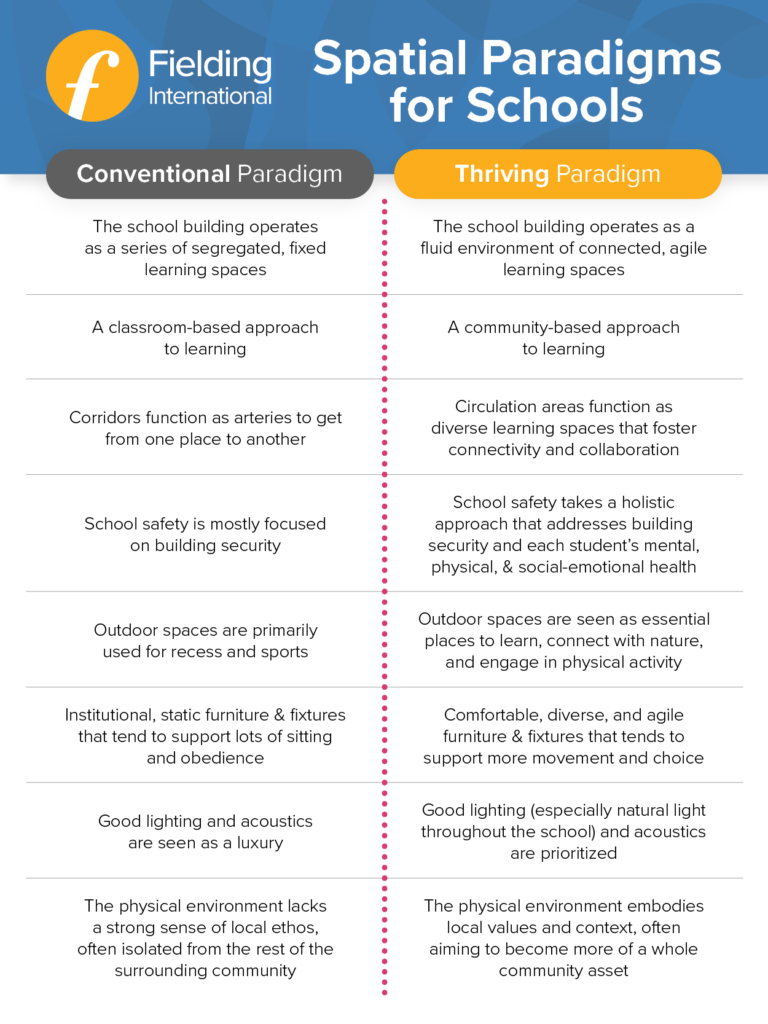
From… The school building operates as a series of segregated, fixed learning spaces
To… The school building operates as a fluid environment of connected, agile learning spaces
In the Thriving Paradigm, learners are not stuck inside the walls of a set classroom environment. They experience diverse and adaptive spaces that support different kinds of learning goals, experiences, and accomplishments. Permeable, flexible spaces allow students to extend the reach of their learning beyond what a single, fixed classroom can offer. The kind of fluid, agile use of space that characterizes the Thriving Paradigm is not the same as what the Open School Movement of the 1970s came to mean. In that movement, openness, or lack of structure, often ended up being a kind of end in itself, as if taking away structure would cause learning to bloom. In the Thriving Paradigm, spaces are intentionally designed to match students’ varying learning needs, strengths, and interests and the school’s curricular goals. The physical environment is not simply unstructured; it is deliberately curated and cultivated to foster learners’ thriving. In the Thriving Paradigm, moreover, multiple and permeable spaces are carefully linked together, so learners don’t simply meander from one spot to the next but move with purpose and clear expectations.
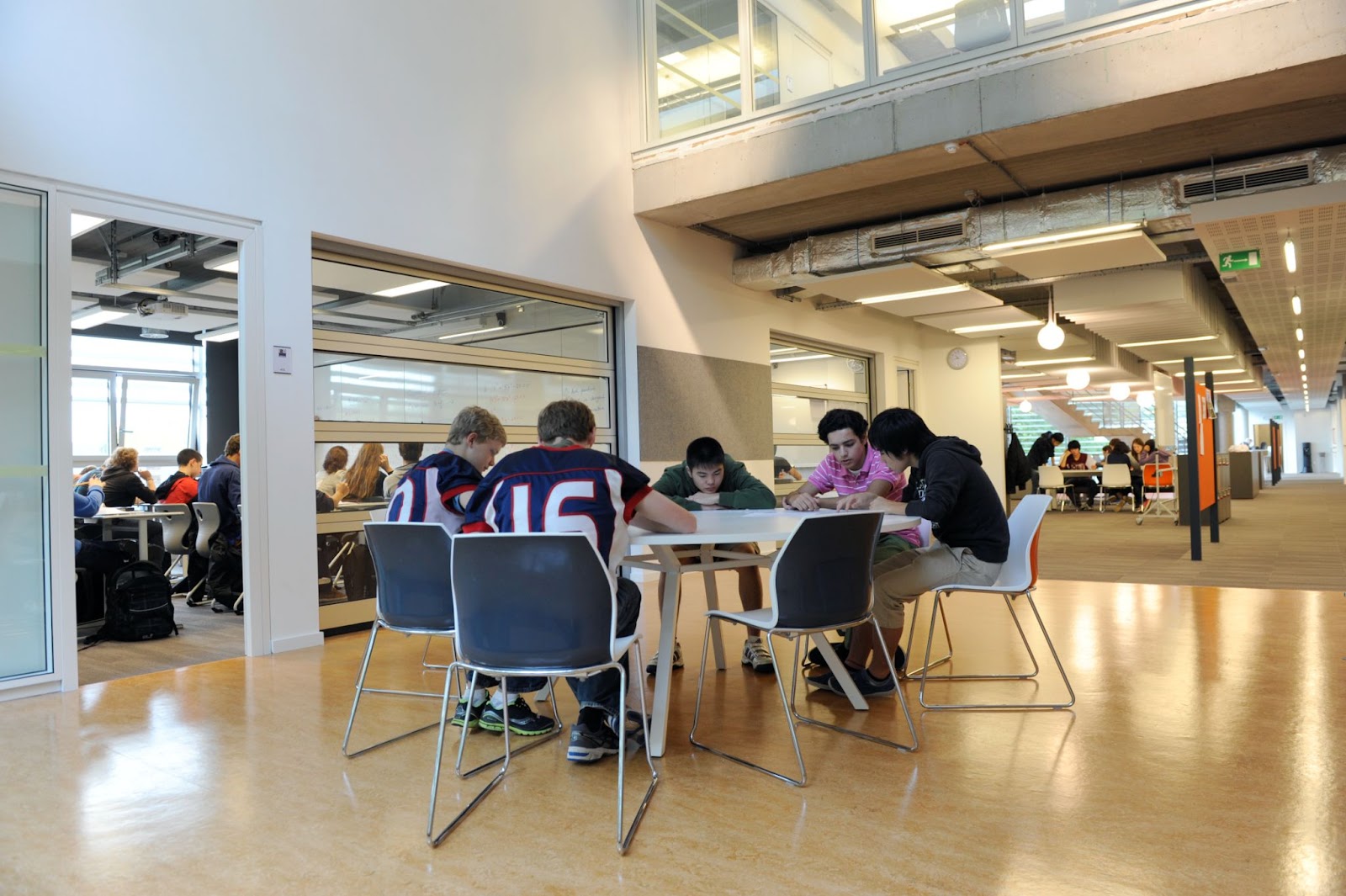
| Connected Campus and Agile Spaces are two design patterns to organize a more cohesive and adaptable environment. |
From… A classroom-based approach to learning
To… A community-based approach to learning
Recognizing that young people are part of many nested communities (in and out of school), physical space can function to either isolate or catalyze relationships within these communities. As much as we can, we want to create structures that allow young people to build strong and meaningful relationships with teachers, peers, and outside-of-school community members. The Learning Community Design Pattern is a key pillar of the Thriving Paradigm as it allows both teachers and students to work and learn in relationship-centered environments. A community-based approach doesn’t limit learning to the walls of the school building but rather seeks ways to actualize anytime, anywhere learning.
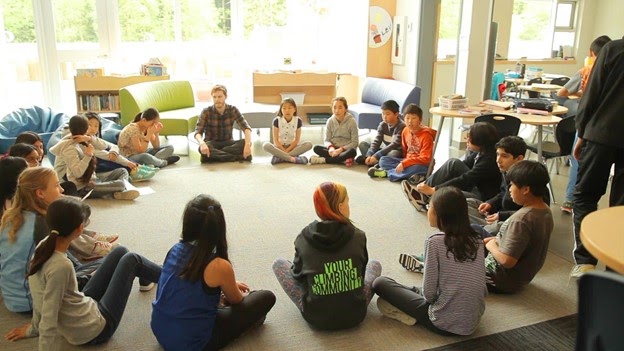
| See the transformation from a classroom-based model to a Learning Community in this 2 minutes video. |
From… Corridors function as arteries to get from one place to another
To… Corridors function as diverse learning spaces that foster connectivity and collaboration
One of the biggest surprises I experienced when I started learning about school design – hallways can take up to 30% of the overall area of a school! To think that these spaces haven’t traditionally been seen as learning spaces… such a waste. In the Thriving Paradigm, corridors become dynamic places with excellent natural light, walkability, family-size groupings of small lockers, and embedded learning zones. In addition to contributing to a more connected and relationship-centered campus, this part of the paradigm shift dramatically increases the utilization rate, meaning buildings can be smaller and less expensive with a reduced carbon footprint.
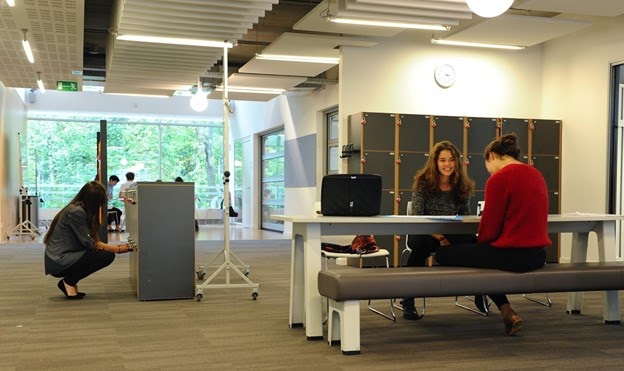
| For those looking to do a small spatial pilot with an immediate impact, check out the Design Pattern Active Hallway. |
From… School safety is mostly focused on building security
To… School safety takes a holistic approach that addresses building security and each student’s mental, physical, & social-emotional health
Schools can maintain physical building security through best practices like layered access, multiple egresses, and the ability to lockdown learning communities. But, school safety that doesn’t consider the holistic health and well-being of the individuals in the environment simply isn’t good enough for our students and teachers. With our deeper understanding of how trauma impacts learning, the ongoing reality of youth mental challenges, and teacher burnout, it’s never been more important to create holistically safe school environments for learners of all ages.
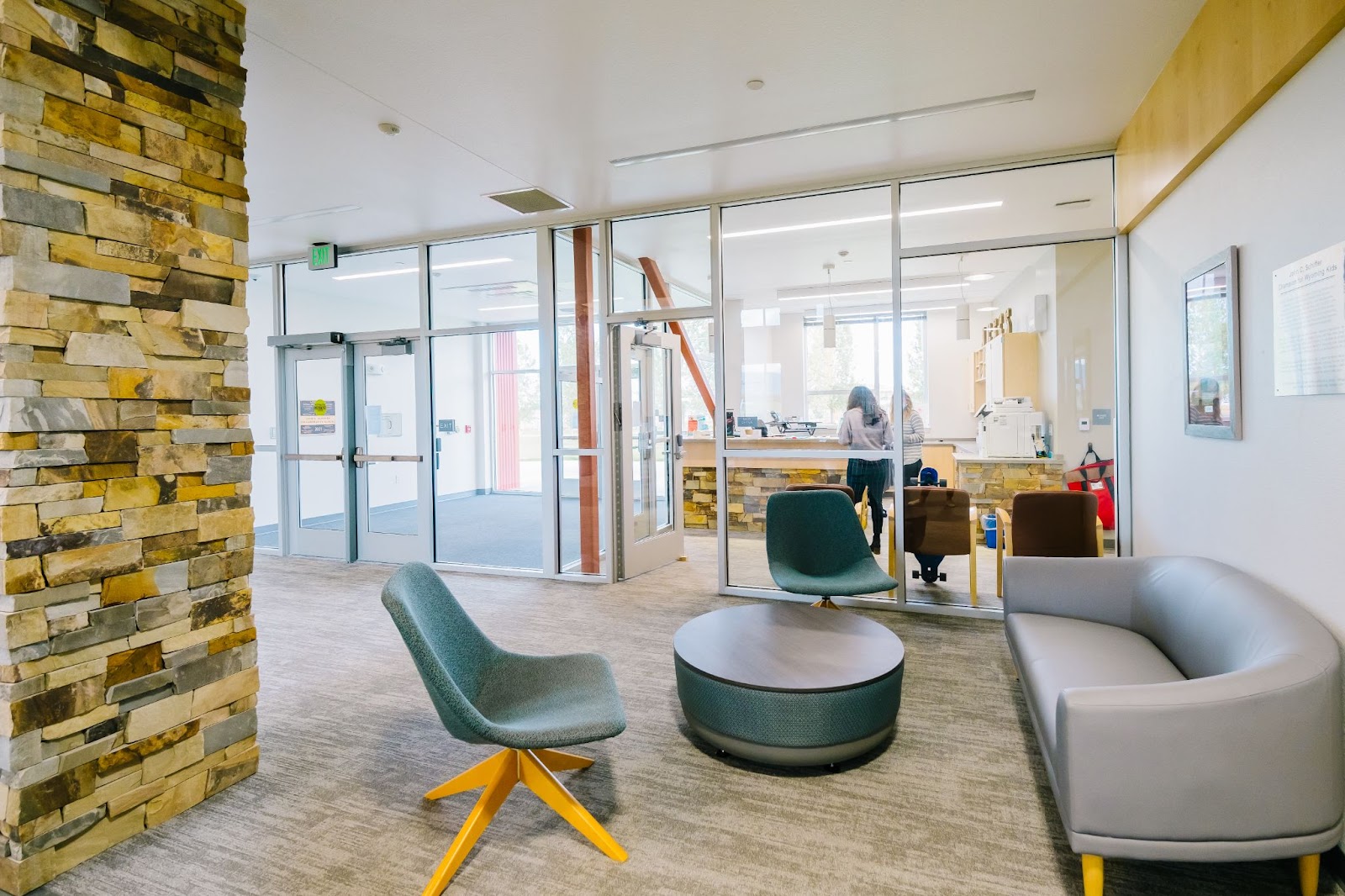
| Calming retreats, Sensory Control, designing for movement, providing accessible wraparound supports are all ways to take a more holistic approach to health and safety. |
From… Outdoor spaces are primarily used for recess and sports
To… Outdoor spaces are seen as essential places to learn, connect with nature, and engage in physical activity
In discovery visits that we’ve done with young people all over the world, one of the two most common desires we hear is more outdoor learning (the other is more small, intimate spaces). Pairing this desire with the myriad of health, wellness, and educational benefits that result from connecting with nature, it’s a no-brainer for schools to shift mindsets and create spaces that get kids learning outdoors.
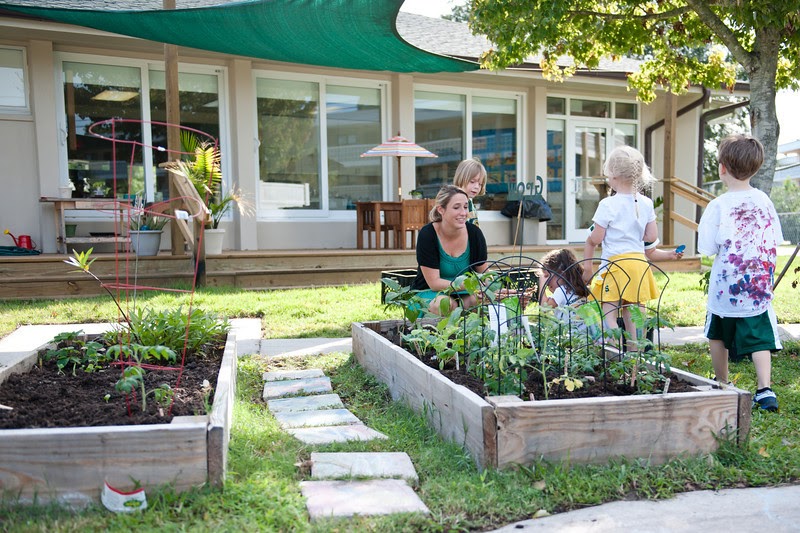
| Outdoor meandering paths with destinations like amphitheaters, project space, and cocoons provide reasons to bring learners outside. |
From… Institutional, static furniture & fixtures that tend to support lots of sitting and obedience
To… Comfortable, diverse, and agile furniture & fixtures that tends to support more movement and choice
The way we furnish our learning spaces says a lot about our priorities for how the space will be used. While rows of institutional desks where students sit for most of the day are no longer en vogue, many of today’s schools still lack the diversity of spaces and furnishings that support genuine student agency and social-emotional learning.
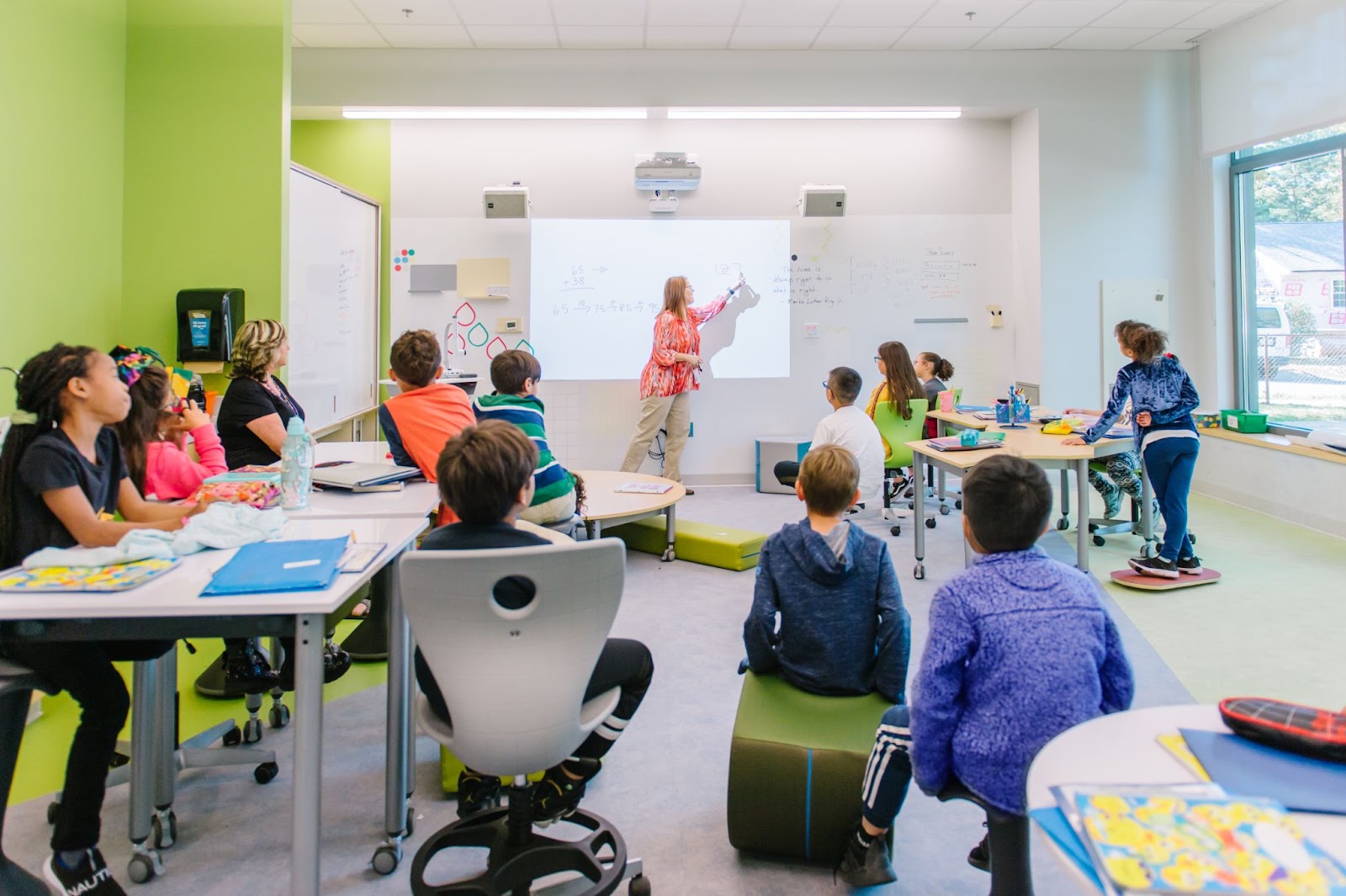
| The Design Patterns Variable Seating and Whole-body Learning can help schools take immediate action in this domain. |
From… Good lighting and acoustics are seen as a luxury
To… Good lighting (especially natural light throughout the school) and acoustics are prioritized
Historically speaking, citadels didn’t have good natural lighting. There was a reason for this: it made the structure more defensible. Throughout the 20th-century, three-building types, unfortunately, continued the tradition of the inward orientation of these historical fortresses: shopping malls, prisons, and schools. Early in my work with Fielding International, I asked Randy Fielding what he believed to be the most important feature of a good design school. He surprised me by saying “good lighting.” The more I’ve walked through windowless hallways and classrooms with uniform fluorescent lamps, the more I get his point. And as any teacher who has been in noisy open environments can attest to, good acoustics are critically important.
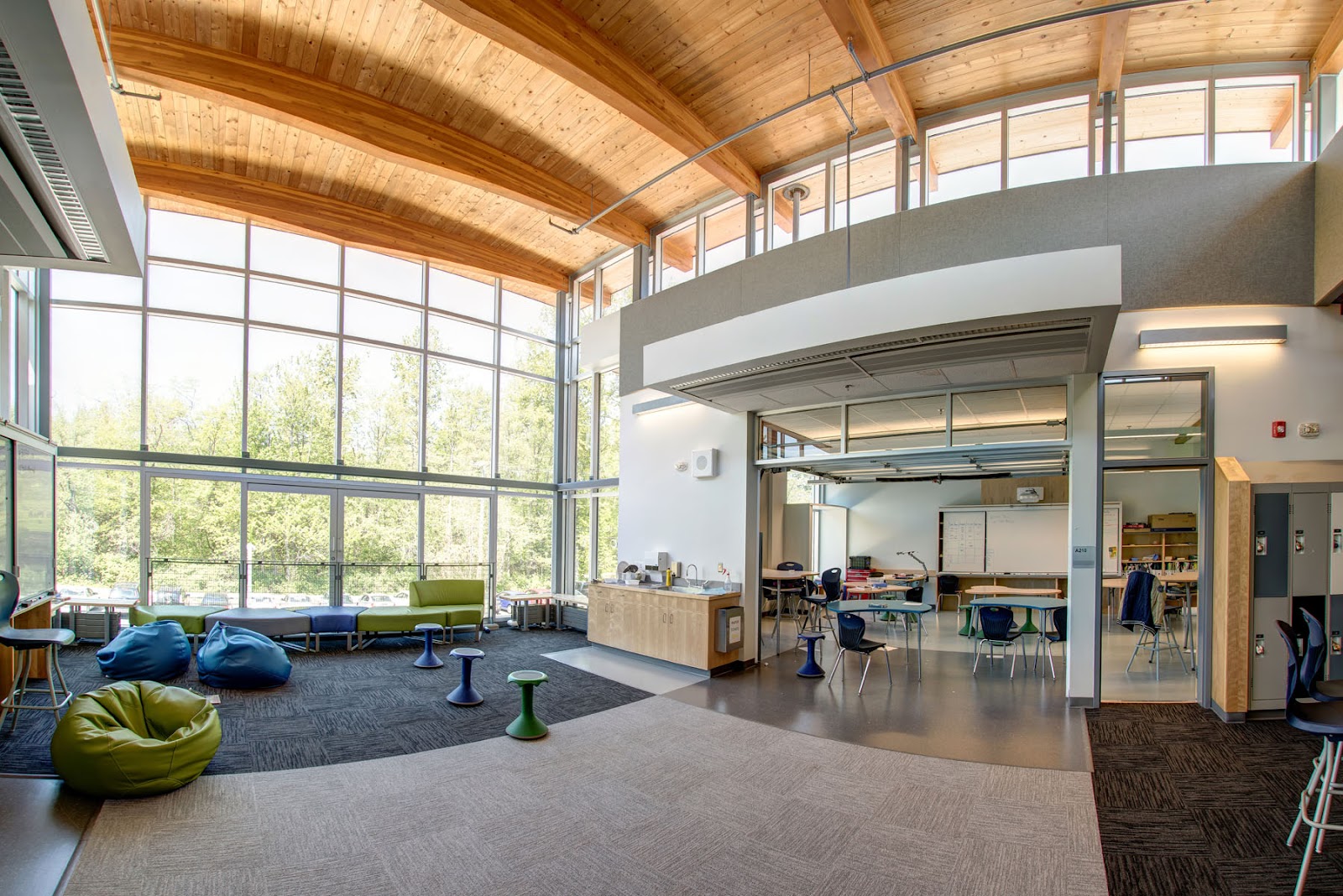
| Daylighting; Lighting, Learning, & Color; and Considering Sound are essential to design patterns to re-prioritize lighting and acoustics. |
From…The physical environment lacks a strong sense of local ethos, often isolated from the rest of the surrounding community
To… The physical environment embodies local values and context, often aiming to become more of a whole community asset
A school can feel like it’s an integrated part of the community it serves. The structure itself can blend with local elements, like Strathcona Tweedsmuir below using the angled roof peaks and organic material and patterns to feel part of the natural world around it. Schools can incorporate locally-sourced natural materials for both environmental and wellness benefits. Through space and programming, creative schools actively seek opportunities to become a vibrant community hub that welcomes a wide and diverse part of the community. In doing so, they bring in local connections and make learning for the young people they serve more authentic and relevant.
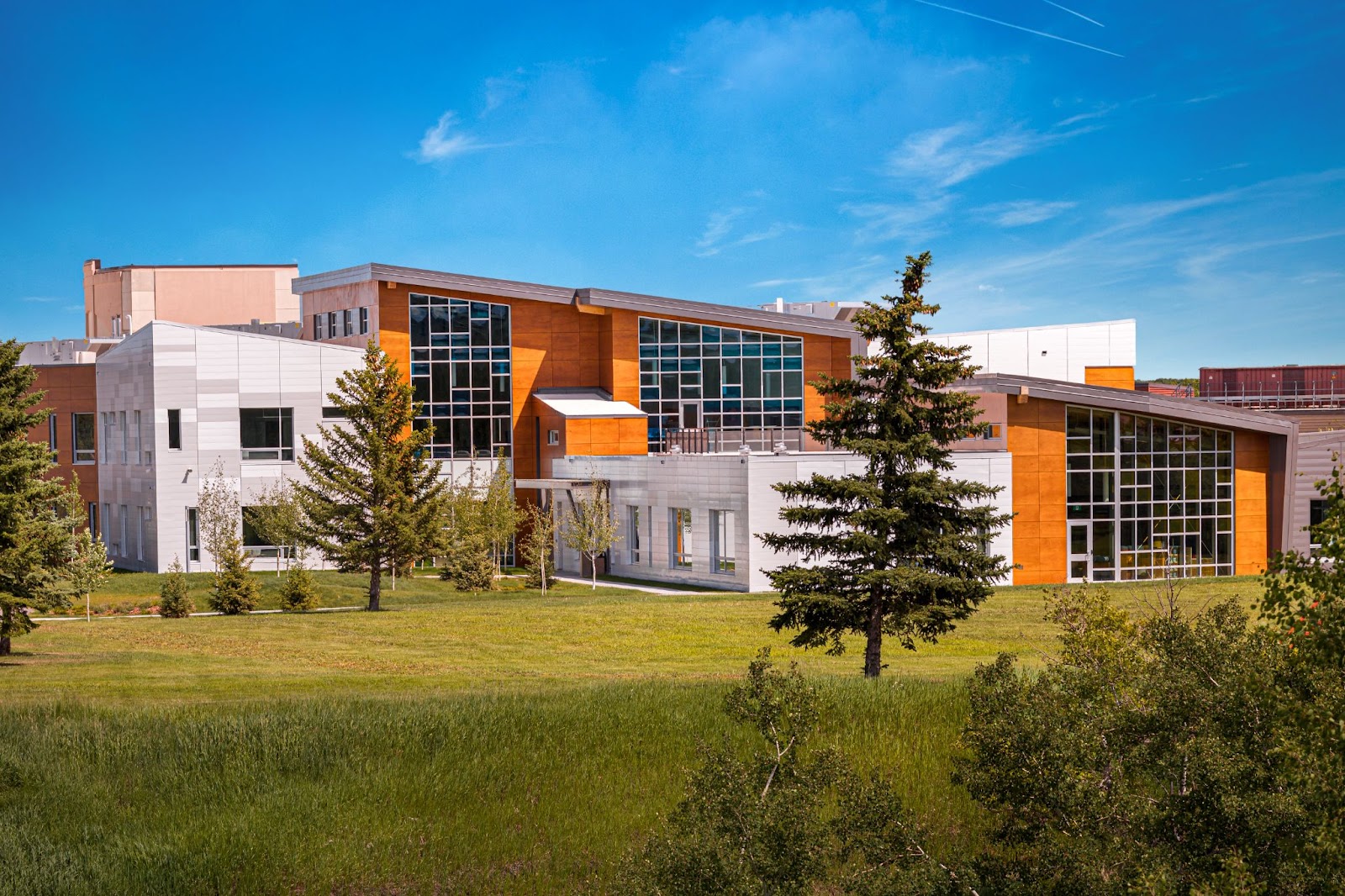
| Schools looking to ground learning in authentic, relevant learning and create wraparound services can consider the Joint, Shared, & Integrated design pattern. |
Bring the Thriving Paradigm Home
If you are someone who wants to move towards a spatial paradigm that aligns with your commitment to thriving kids, don’t hesitate to reach out. We’ve worked with school communities in over 50 countries with a wide range of available resources and readiness, and we are happy to provide guidance to identify the next steps that work best for you.
Author’s note: I want to thank Cierra Mantz and Glen Fielding for the incredible collaboration in editing and offering suggestions to bring the Thriving Paradigm alive.
Nathan Strenge is a Senior Learning Designer at Fielding International, USA Country Lead at HundrED, and Founding Board Chair of Exploration High School. He can be reached at [email protected] or found on LinkedIn.







0 Comments
Leave a Comment
Your email address will not be published. All fields are required.